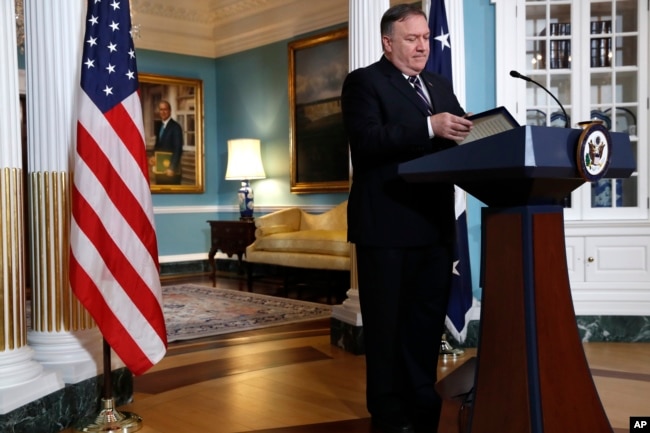US Refugee Proposal Would See Decrease for Africa, Middle East Countries

VOA/Victoria Macchi
The U.S. State Department is proposing that the United States receive proportionally fewer refugees from Africa and the Middle East in the coming year than it planned to last year, in favor of an increase in refugees from Asia and Europe, Latin America and the Caribbean, according to data obtained from the agency.
In a recent email, a department spokesperson confirmed the regional allocations first reported by Politico last week.
The numbers are not final, however. The State Department told VOA last week it was in the process of scheduling the required consultations with Congress before the end of the fiscal year on Sept. 30, after which President Donald Trump will issue the annual presidential declaration confirming the so-called refugee ceiling. That is, the maximum number of refugees that would be allowed into the United States in the coming 12 months.
The regional shifts are part of a proposal that would reduce the number of refugees allowed into the country for Fiscal Year 2019 to 30,000, a record low for the program.
As it stands, the proposed amounts for each region, according to the State Department, are:
Africa — 11,000, down from 19,000 in fiscal 2018.
Near East and South Asia (includes the Middle East) — 9,000, down from 17,500.
East Asia — 4,000, down from 5,000.
Europe — 3,000, up from 2,000.
Latin America and the Caribbean — 3,000, up from 1,500.
«One of the most egregious aspects of this administration’s refugee policy is the dramatic regional discrepancies we saw in FY2018,» said Matthew LaCorte, an immigration policy analyst at the libertarian Niskanen Center, who has written about regional allocations under the Trump administration. «The 2019 regional ceilings set in stone these regional priorities — moving away from the resettlement of African and Middle Eastern refugees.»
The proposed ceiling marks an upper threshold — not a goal. With about a week left in the fiscal year, fewer than 22,000 of a proposed 45,000 refugees had been admitted into the country, according to State Department data.
Moreover, regional allocations don’t always align with reality. For example, last year, the president mandated that 42 percent of refugees come from Africa. As of Sept. 21, that figure was 46 percent.
Another region that exceeded its intended allocation: Europe, where a surge in Ukrainian refugees accounted for part of the jump from a proposed 4 percent of refugees to a reality of 16 percent.
The difference in refugee arrivals from the Middle East in the last year was the starkest. The administration capped the number at 39 percent — 17,500 Middle Eastern refugees of the 45,000 total; to date for FY2018, it has admitted 3,756 from the Middle East, or about 17 percent.
What the coming year will look like for refugees entering the U.S. depends on two issues.
First will be the results from the meetings between members of Congress and administration officials in the coming week, as Congress could tweak the regional allocations, and the total, in either direction.
Second will be how the refugee admissions program continues. Refugee officials note there is a dwindling staff to handle cases, and additional screening for refugees from 11 countries has affected arrivals from some locations.


